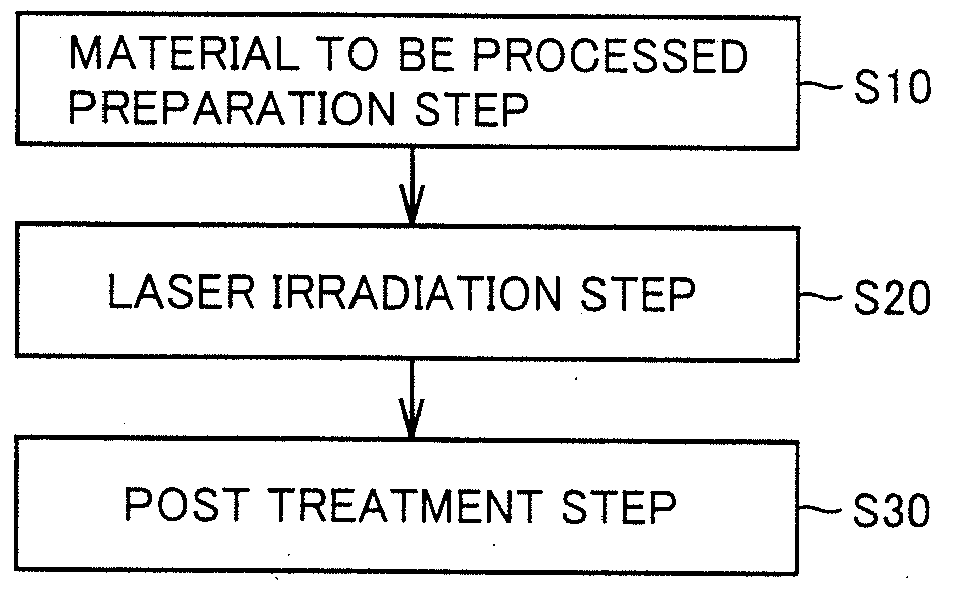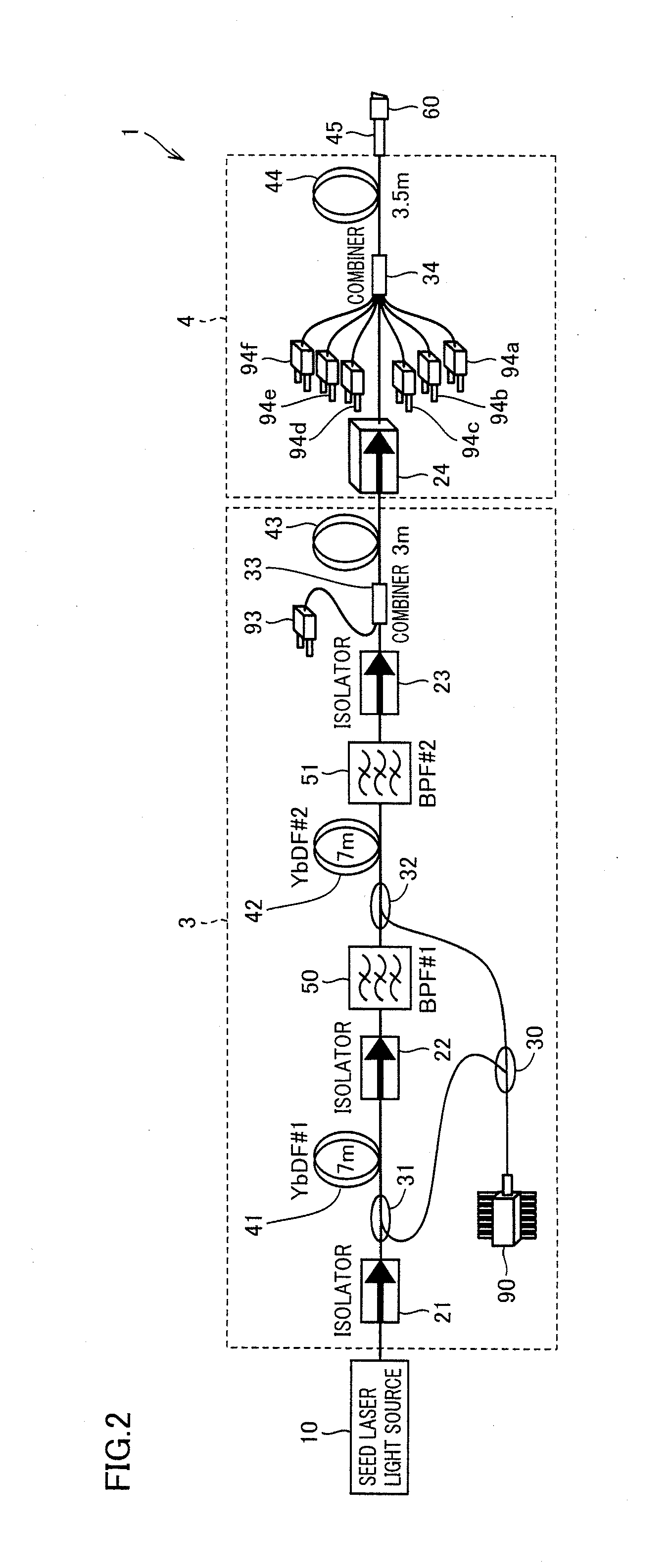Laser processing method
a laser processing and cutting surface technology, applied in the field of laser processing methods, can solve the problems of inability to increase the length of the modified area in the thickness direction of the material to be processed too much, and the variation of the shape of the cut surface, so as to achieve the effect of suppressing the increase in cost and excellent cutting surface shap
- Summary
- Abstract
- Description
- Claims
- Application Information
AI Technical Summary
Benefits of technology
Problems solved by technology
Method used
Image
Examples
experiment 1
[0155]An experiment as described below was conducted to describe the effect of the laser processing method according to the present invention. In the following experiment, the pulse width of pulsed laser used as the laser light source was set to 180 ps.
[0156](Specimen)
[0157]A sapphire substrate having a thickness of 400 μm was prepared as a specimen of a material to be processed in the laser processing method according to the present invention. The sapphire substrate had a square planar shape of 10 mm long and 10 mm wide. The surface (glossy surface 12) of the specimen was mirror-finished and the lower surface (satin-finished surface 13) was satin-finished.
[0158](Contents of Experiment)
[0159]Pulsed laser beam obtained from the MOPA laser light source shown in FIG. 2 was focused using a lens having a focal length of 20 mm, and the sapphire substrate serving as the material to be processed was irradiated with the focused pulsed laser beam. The laser beam entering the lens had a beam d...
experiment 2
[0171]The laser beam irradiation conditions were changed and an experiment was conducted to check the effect of the laser processing method according to the present invention.
[0172](Specimen)
[0173]A specimen (sapphire substrate) similar to the specimen prepared in aforementioned Experiment 1 was prepared as a material to be processed.
[0174](Contents of Experiment)
[0175]Laser processing of the prepared sapphire substrate was performed similarly to Experiment 1. The laser beam irradiation conditions were basically similar to those in aforementioned Experiment 1 except that the moving speed of the specimen was set to 40 mm / s. Using conditions similar to conditions 1 to 4 in aforementioned Experiment 1 as conditions about the distance between the specimen and the lens, laser processing experiments were conducted, respectively. Then, a side surface of a laser beam-irradiated area and a laser-irradiated surface (glossy surface) of the processed specimen were observed with the optical micr...
PUM
| Property | Measurement | Unit |
|---|---|---|
| peak wavelength | aaaaa | aaaaa |
| spectral width | aaaaa | aaaaa |
| surface roughness | aaaaa | aaaaa |
Abstract
Description
Claims
Application Information
 Login to View More
Login to View More - R&D
- Intellectual Property
- Life Sciences
- Materials
- Tech Scout
- Unparalleled Data Quality
- Higher Quality Content
- 60% Fewer Hallucinations
Browse by: Latest US Patents, China's latest patents, Technical Efficacy Thesaurus, Application Domain, Technology Topic, Popular Technical Reports.
© 2025 PatSnap. All rights reserved.Legal|Privacy policy|Modern Slavery Act Transparency Statement|Sitemap|About US| Contact US: help@patsnap.com



